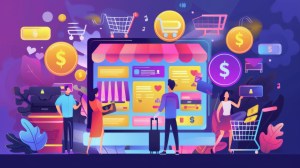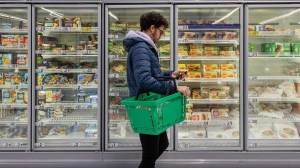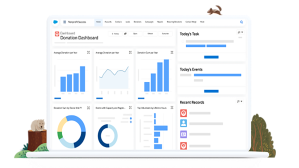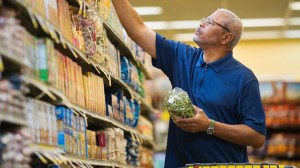India’s consumer goods retail ecosystem remains highly fragmented, with over 70% of the market served by unbranded or regional brands and dominated by traditional kirana stores, according to a report by Redseer Strategy Consultants. This fragmentation leads to uneven retail execution. Brands struggle to ensure consistent product placement, pricing, and promotions across thousands of local vendors, highlighting the need for stronger field processes and data-driven oversight.
Consumer Goods (CG) companies can’t afford to miss sales opportunities. Margins have returned to slim baselines as pricing and costs stabilise. It’s never been more important for your retail execution plans to deliver. Ready to rethink your retail execution strategy?
Let’s get started:
- What is Retail Execution?
- Key components of retail execution
- Retail execution best practices
- How brands have improved their retail execution
- Driving customer success in India with the Consumer Goods Cloud
- How does an effective retail execution strategy help a brand?
- Frequently asked questions (FAQs)
What is retail execution?
Retail execution refers to the activities CG brands use in retail stores to help their brands “pop” on shelves and land in shoppers’ carts. It includes things like product placement, pricing, promotions, inventory management, and store staff training. When it’s done well, brands can be sure the right products are available at the right time and at the right price. This drives revenue for the brand, encourages retailers to give you more shelf space, and can boost shopper satisfaction and loyalty.
Why is retail execution important?
Retail execution is essential to a CG brand’s profitable growth. Your field reps make sure your products are displayed well and have good visibility. They ensure retailers have the right amount of stock they need to meet demand and that it’s priced competitively. Effective retail execution keeps your brand up front for shoppers, so they’ll buy again and again (and tell their friends). It also helps retailers stay competitive by allowing them to adapt to consumer and market trends in real time.
Attention-grabbing retail execution
Key components of retail execution
A retail execution strategy is made up of a lot of moving parts. Its key components include:
Merchandising
Selecting the product assortment, determining product placement in stores, making sure product displays follow the planograms, and setting pricing all play a part. Effective merchandising ensures brand consistency, drives impulse purchases, and influences shopper decisions. Regular audits and visual compliance checks help maintain the right in-store look and feel.
Inventory management
Keeping track of stock levels and reordering as needed are keys to effective inventory management. Real-time visibility into inventory across distribution centres and retail shelves helps avoid stock outs or overstocking. Accurate forecasting and timely replenishment ensure product availability, reduce wastage, and improve supply chain efficiency, especially during peak demand periods.
Promotions
Planning and executing campaigns, events, and discounts brings shoppers into stores and increases sales. Promotions must be tailored to specific geographies, seasons, and target audiences. Success depends on coordinated rollout, in-store visibility, and timely evaluation to adjust strategies based on real-time sales and footfall data.
Staff training
Educating a retailer’s associates on your products is crucial in helping them sell, upsell, and cross-sell. Well-trained staff can confidently answer customer questions, recommend complementary products, and deliver better service. Ongoing training, quick-reference materials, and incentives improve staff engagement and in-store performance.
Data analytics
Tracking and analysing sales performance, consumer behaviour, and stores’ operations helps you determine the success of a promotion so you can better plan the next one. Insights into which SKUs perform best, when and where, help brands refine assortments, optimise pricing, and localise strategies more effectively.
Retailer relationships
Working closely with retailers contributes to the success of in-store promotions, resolves issues quickly, and helps you negotiate better terms. Strong relationships foster trust, ensure priority shelf space, and create smoother execution. Regular check-ins, feedback loops, and collaborative planning are key to long-term mutual growth.
How to make the most out of your retail strategy
To make your retail execution budget pay off, it’s important to follow a few best practices.
Understand retail relationships.
Take time to understand the retailer’s business and build a collaborative partnership where you plan together, constantly communicate, and align both of your goals.
Build a support plan.
Give your retailers what they need to sell your products. This includes training materials, promotional collateral, and point-of-sale displays that help them showcase your products.
Pull out all the stops for position.
Be relentless in getting the best shelf placement, end-cap displays, and locations within the store. If you don’t, your competitors will.

How brands have improved their retail execution
Want to improve your retail execution? Start by focusing on three areas: inventory visibility, strategy adherence, and always-on pricing access.
Keep tabs on your inventory to keep shelves stocked
Inventory problems like out-of-stocks or delivery slowdowns disappoint shoppers, let down retailers, and negatively impact your bottom line. That’s why 52% of CG leaders told us they want better visibility into their inventory, according to Salesforce’s The Sixth Edition Connected Shoppers Report.
Field reps who use the right retail execution solution can tell their company’s supply-and-demand planning teams where the real needs are and help them optimise the flow of goods. This is likely to win over retailers who don’t like losing sales either.
To keep shelves stocked, your field reps also need solutions to help them plan more efficient store visits. Mobile devices, such as tablets that work with and without connectivity, let reps access current inventory levels; plan routes intelligently; order products; and send reports, no matter where they are. For example, field reps can reorder inventory right at the store — and if the warehouse is out of stock, they can suggest alternatives on the spot. If connectivity is spotty, orders will execute as soon as those wireless bars return.
Make sure in-store displays play by your rules
Store displays are critical if you want consumers to keep reaching for your products. In grocery stores, for example, placing products on an endcap yields a 93% increase in exposure — a huge advantage since 62% of grocery store purchases are impulse buys.
And yet, globally, only 48% of CG leaders say their merchandising and marketing plans are executed as intended at their retail locations. Give your field reps the information they need to carry out your carefully planned strategy. They need easy access to planograms and display instructions so they can quickly set up product displays in stores rather than search online and in briefcases for directions. This frees them up to consult with store managers and associates, building relationships that ultimately result in more sales. It also gives them more time to scope out what your competitors are doing so they can report back to the sales and marketing team.
Field reps are the connective tissue between your brand and retailers. Providing them with accurate information — and keeping that information up to date and accessible with smart retail execution strategies — plays a major role in how your brand presents to consumers. Ultimately, field reps are your eyes and ears, evaluating competing merchandise and sharing what’s happening in the shopping aisles.
Give field reps access to always-on pricing
It’s early February and your field reps are eager to keep shelves stocked before Valentine’s Day. But they’re missing order opportunities everywhere they go. Why? Without offline access to pricing scales, per-unit cost, and manufacturer discount information, they can’t place orders easily or at the right moments. That harms your retailer relationships, especially when your competitor’s field rep can immediately place an order for their right-priced, heart-shaped balloons.
Penny-perfect pricing is a must-have in the industry – and your field reps need it at their fingertips. Be sure they can access accurate pricing, with or without connectivity, no matter where they are. With it, reps can answer product questions, quickly place seasonal orders while on site, and feel confident they’re priced competitively.
Driving customer success in India with the Consumer Goods Cloud
Bharat Petroleum Corporation Ltd. (BPCL), one of India’s largest oil marketing companies, set out to unify its vast operations under a bold vision: One BPCL. With 18,000+ fuel stations and 8.5 crore LPG customers, customer data was scattered across silos, limiting insights, slowing response times, and missing cross-sell opportunities. With Salesforce, BPCL is creating a single source of customer truth across its business units. Sales Cloud is streamlining the sales cycle, while Service Cloud brings customer and partner interactions into one place, accelerating resolution. Tableau CRM empowers leadership with rich insights to drive smarter decisions. With Field Service on the way, BPCL will enable its vast network of dealers and distributors to grow with real-time collaboration and better tools. Salesforce is helping BPCL deliver a seamless customer experience at scale by powering smarter growth, stronger loyalty, and a unified future for one of India’s most trusted brands.
As India’s top decorative paints company, Asian Paints set out to reimagine home décor through its Beautiful Homes brand, with technology at the core. To deliver hyper-personalised, seamless customer experiences, Asian Paints chose Salesforce as its foundation. With Service and Consumer Goods Cloud, all of its services from painting to kitchens, baths, and contractor management now live on one connected platform. Sales and Service Cloud automate lead-to-quote journeys, reducing turnaround times and improving response, while CRM Analytics and AI deliver granular customer insights, enabling teams to craft bespoke offerings at scale. Field teams benefit with 360-degree dealer views, and reps now have smarter, more strategic conversations. Thanks to Signature Success, Asian Paints built a strong implementation foundation that puts users first and drives ROI. Asian Paints is replacing legacy systems with a single digital engine that delivers speed, trust, and unforgettable customer experiences across every touchpoint with the help of Salesforce.
How does an effective retail execution strategy help a brand?
Retail execution strategies keep brands top of mind. Retail execution activities are essential in motivating consumers to reach for your product and in convincing retailers to give you prime placement in stores. But to make your retail execution budget pay off, you need to give home office teams and field reps the tools and technology that make the process easier, more efficient, and more productive.
Frequently Asked Questions (FAQs)
Retail execution software helps consumer goods brands in India deliver consistent brand experiences across diverse markets, from urban supermarkets to rural kirana stores. With Salesforce Consumer Goods Cloud retail execution, companies can optimise field rep visits, ensure on-shelf availability, and reduce out-of-stocks or display gaps. A connected, intelligent platform built on real-time data empowers teams to turn every store check into a sales opportunity.
Salesforce Einstein brings AI-powered intelligence to Consumer Goods Cloud retail execution. For Indian brands navigating seasonal demand spikes, regional trends, and supply chain complexities, AI helps predict stock needs, plan smarter routes, and personalise store-level activities with a mobile-first experience. The results? Faster execution, sharper insights, and more productive field teams.
Consumer goods brands in India face fragmented retail ecosystems, manual field processes, and limited store-level visibility. Consumer Goods Cloud retail execution addresses these challenges head-on. It unifies data, automates tasks, and empowers field reps with real-time insights so brands can execute flawlessly, even across India’s most remote or high-traffic retail locations.
Retail execution thrives on integration. With Salesforce, Indian brands get a unified platform that connects sales, service, and marketing with field operations. Consumer Goods Cloud provides a 360-degree view of each store, while CRM Analytics and Tableau surface insights that help teams prioritise high-impact tasks and accelerate in-store execution while building lasting retailer relationships.
(Back to top.)













